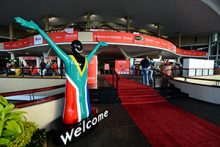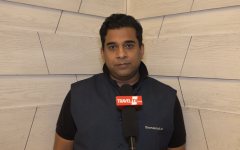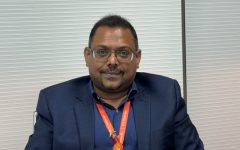 South African Tourism is putting the final touches on an event that will foster closer collaboration and targeted business interactions in an effort to have a more productive trade show for buyers and exhibitors. INDABA, Africa’s leading travel show, returns to the Inkosi Albert Luthuli International Convention Centre in Durban from May 16 to 18, 2017, sporting a more streamlined programme and improved floor layout. INDABA 2017 will see more than 7,000 delegates from around the world meeting in Durban to grow the African tourism economy through conversations, partnerships and a focus on doing business, South African Tourism Chief Executive Sisa Ntshona said.
South African Tourism is putting the final touches on an event that will foster closer collaboration and targeted business interactions in an effort to have a more productive trade show for buyers and exhibitors. INDABA, Africa’s leading travel show, returns to the Inkosi Albert Luthuli International Convention Centre in Durban from May 16 to 18, 2017, sporting a more streamlined programme and improved floor layout. INDABA 2017 will see more than 7,000 delegates from around the world meeting in Durban to grow the African tourism economy through conversations, partnerships and a focus on doing business, South African Tourism Chief Executive Sisa Ntshona said.Through the online diary and matchmaking system, delegates can use technology to set up pre-scheduled meetings with buyers or exhibitors that may match their needs. A new INDABA app will also function as a digital resource for updates. The Hidden Gems pavilion will introduce the world’s travel buyers and visitors to small tourism enterprises from each of South Africa’s nine provinces that may otherwise have remained undiscovered. Delegates at the trade show will be exposed to the full breadth of Africa’s tourism offerings, including high-end products at the Tourism Grading Council’s new luxury pavilion. This feature will cater to global buyers who are on the lookout for the premier five-star offerings many destinations on the continent are famed for.
Apart from the pre-scheduled meetings, buyers will have the chance to meet with exhibitors during the morning speed marketing sessions on each of the three show days. Here, participating exhibitors will be grouped according to themes such as lap of luxury, scenic outdoors and award winners before making short presentations on their offerings. These sessions are an excellent way for buyers to ask questions and learn more about exhibitors – many of whom are small businesses.
Because this is a continental showpiece, INDABA’s focus on African destinations gives visitors a chance to become acquainted with exciting product developments throughout the continent. Industry players from more than 17 African countries are taking part, including Angola, Botswana, the DRC, Lesotho, Madagascar, Malawi, Mauritius, Mozambique, Namibia, Réunion, Seychelles, Senegal, South Africa, Swaziland, Tanzania, Zambia and Zimbabwe.
 Tourism Breaking News
Tourism Breaking News


